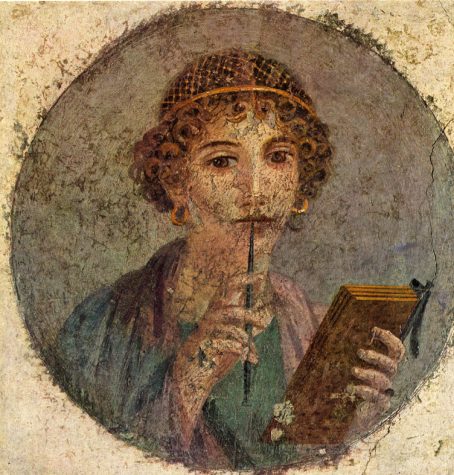Readin’ with Rachel: A tribute to women in writing
To the writers who inspire me.
Mar 24, 2021

All my life, I knew I wanted to make a difference in the world. When I was 6, I wanted to be a famous singer or celebrity like Britney Spears or Rihanna (Yes, I wrote that in my American Girl Doll diary). When I was 15, I wanted to be a great athlete like Elaine Thompson or Mirai Nagasu. Everyone has that “thing” that they do. I never felt like I truly had one until college where I truly found my niche: writing. And it was all thanks to a few wonderful women.

As a freshman, I read Malala Yousafzai. Malala showed me that even a young woman can change the world. After publicly advocating for women’s right to learn, she was shot in the head by a gunman, as described on her website. However, she miraculously lived. While the terrifying incident might pressure someone into silence, it pushed her to persevere and make an impact in the world. What better way to fight back than by being alive? Before starting college, I knew there would be hurdles as a woman in politics. Frankly, I was terrified of giving my own opinion. I have heard all the female stereotypes from numerous people … and I started to believe them. What could I do as a young woman? What do I know? My questions were answered after reading her book, “I am Malala.” I immediately experienced how impactful writing can be. Her remarkable words introduced me to a medium I had been using all my life but never fully explored. With my passion ignited, I was ready to take on the world.

As a sophomore, I read Sappho. As a young woman exploring her identity, I immediately fell in love with the illustrious poet from Lesbos and her brilliant work that explores female sexuality. While a majority of her work is lost, Sappho’s cultural impact knows no bounds, even being called “the tenth muse” by Plato, according to Poets.org. Sappho revolutionized a new style of lyric writing by using first-person and speaking from one individual to another rather than writing strictly about gods or retelling epics. In her most famous (and my favorite) lyric “Ode to Aphrodite,” she pleads with the Greek goddess Aphrodite to mend her heart, which was broken by a past lover who is speculated to be a woman. Sappho showed me how beauty, mystery, love and sexuality can inspire. Fun fact: The words “lesbian” and “sapphic” are both derived from Sappho, according to Real History.

As a junior, I read Robin DiAngelo. With her educational voice and simple words, DiAngelo paints a harsh reality of America. After the pandemic hit, I had a lot of time but not much to do. When the death of George Floyd sparked protests across the nation, many influencers, especial non-white ones, recommended DiAngelo’s book “White Fragility.” It explores how white privilege plays into racism. After reading her book, I noticed how many avoidable mistakes I had made every day. As a white woman, DiAngelo’s book provided me with an unpleasant but necessary understanding of racism in America. She reminded me that I am still learning, which is not something to be ashamed of. Learning and growing are some of the most beautiful parts of life.

As a senior, I read Zitkála-Šá. Her inspiring story and dedication to her art changed the world for Native Americans. After leaving her home at Yankton Indian Reservation in South Dakota in 1884, 8-year-old Zitkála-Šá was taken to a missionary school where she was forced to change her name to Gertrude Simmons, according to The National Park Service. Throughout her years of study, she was torn between her love of learning and her grief over the loss of her heritage — an identity crisis many students face today — so she expressed herself through her work. Zitkála-Šá went on to write an abundance of work ranging from books to operas, however my appreciation for her stems from her published work. She first published a collection of Native American stories, which allowed me to appreciate the hardships as well as the beauty that came with Native American culture. However, one of her more powerful pieces was an article published in 1923 by Indian Rights Association called “Oklahoma’s Poor Rich Indians.” The article exposed how several American corporations committed mass injustices against Native Americans, which influenced Congress to pass the Indian Reorganization Act of 1934. Zitkála-Šá’s story speaks for itself; you have the ability to make a change, no matter who you are.












